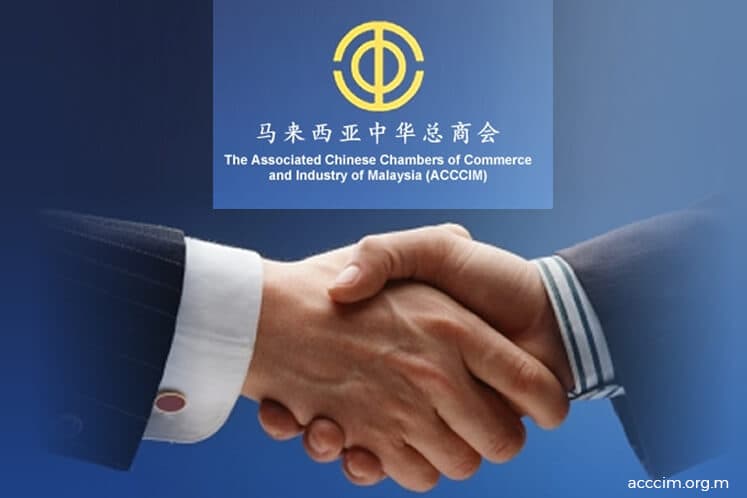
KUALA LUMPUR (Sept 13): The Chinese business community in Malaysia saw a marginal drop in sales and production volumes in the first half of 2017 (1H17), a survey by the Associated Chinese Chambers of Commerce and Industry of Malaysia (ACCCIM) revealed.
According to the survey, which assessed economic situation of Malaysia for 1H17, 30% of Chinese businesses, especially those involved in the manufacturing and wholesale, and retail sectors, have reported weaker sales performance for the period under review, compared to 28% in the second half of 2016 (2H16).
In tandem with slower sales, 39% of local Chinese businesses reported a decline in production volumes in 1H17, compared to 34% in 2H16.
The survey showed that the performance of local Chinese businesses in 1H17 was mainly hampered by government policies (39%), higher operating cost and price of raw materials (34%), more intense domestic competition (27%), and manpower shortage (24%).
Among the government policies cited were minimum wages, foreign workers' levy, the Competition Act 2010, and the goods and services tax, ACCCIM president Tan Sri Ter Leong Yap told reporters here today.
"In the long-term and macro view for the country, it is important to implement (these policies)," Ter said, "however, during implementation, businesses during the transitional period would certainly see impact in their costs of doing business, and compliance cost as well."
In view of that, Ter suggested a more gradual implementation of these policies, especially for the small and medium enterprises.
On a more positive note, the ACCCIM survey revealed that slightly more businesses were operating at more than 60% levels of capacity in 1H17, up 3% from 2H16, albeit most had not yet reached the ideal utilisation rate of 80%.
And fewer businesses were reporting decreased levels of new local orders in the period, easing from 40% in 2H16 to 33% in 1H17.
Meanwhile, inventory levels, new overseas orders, local sales prices, employment market, wage costs per unit of output, investment level in new resources or plant remained relatively unchanged in 1H17.